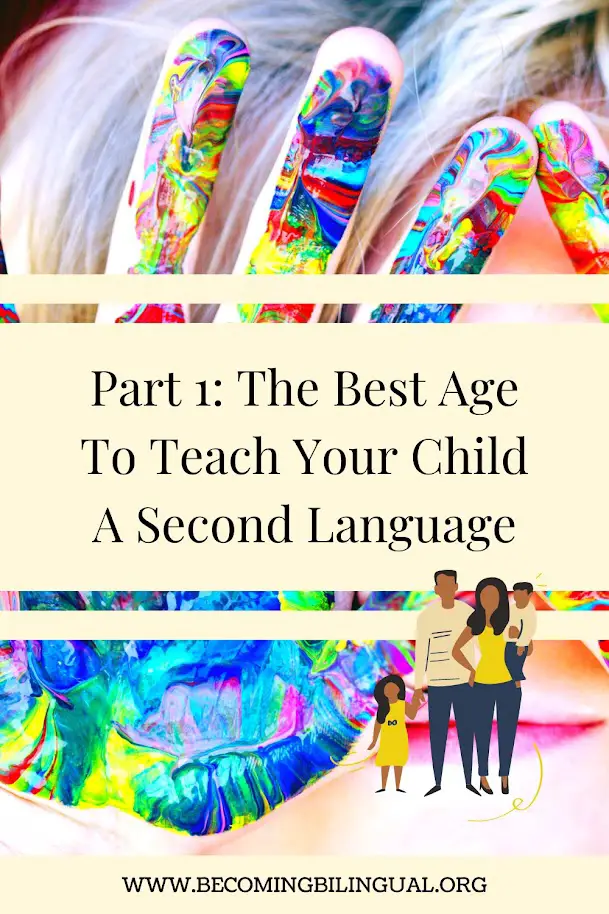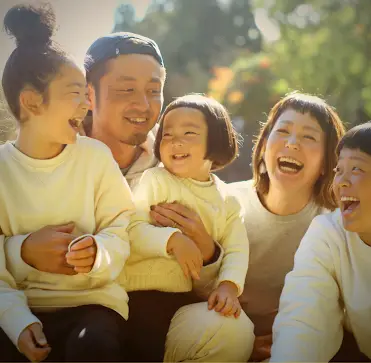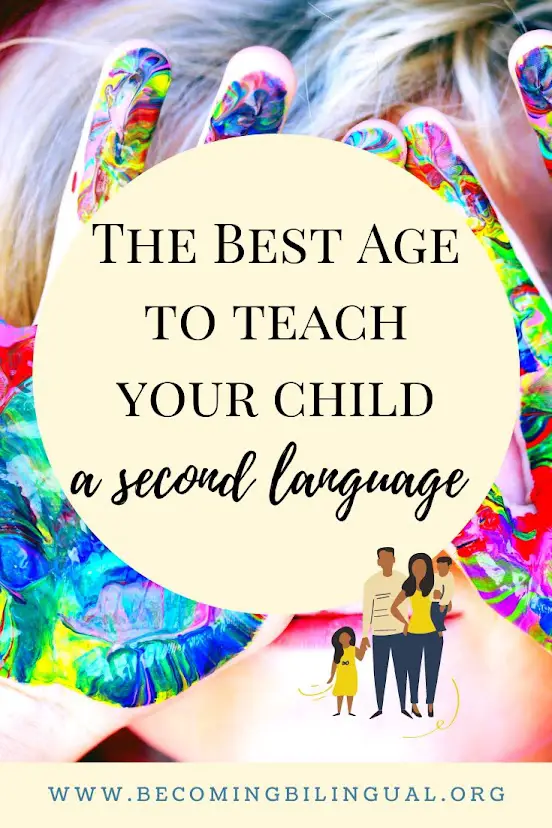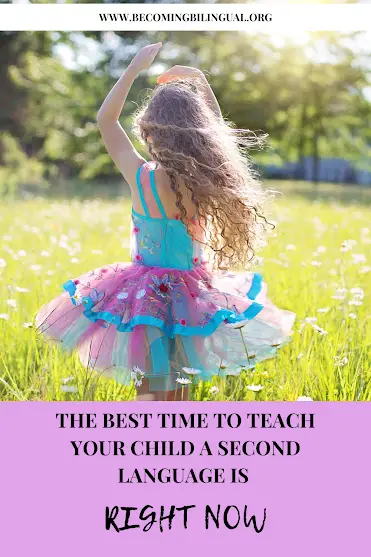What Is The Best Age To Teach Your Child A Second Language?

Last Updated on April 16, 2022 by Reina Victoria
Welcome to my four part series, “How To Teach Your Child A Second Language: A Quick Start Guide”
You already know the benefits of learning a second language and you want to raise your child to be bilingual. If your experience is anything like mine, then you’re wondering how to start.
When my daughter was born, I didn’t have a clear plan or the resources I needed to raise a bilingual child, but after years of practice and hard work, we’re both fluent in a second language!
I’m here to help you jump-start your bilingual parenting journey. Whether you’re a native speaker looking for a few tips, or a monolingual parent hoping to expand your child’s horizons; this guide will help you to get started on your child’s bilingual journey.
Don’t forget to tune in next Monday for part two of this four part series!
Part 1:
Table of Contents
What Is The Best Age To Teach Your Child A Second Language?
The short answer is – Now!
The longer answer – Despite a lack of definitive research in the field, the general consensus is that it’s better for children to be exposed naturally to a second language as young as possible.
Toddler brains are hardwired to learn languages. Much of their ability to learn a second language is unconscious. They absorb the sounds and assimilate them into their brain’s language center the same as they would their first language. When children start to learn languages as babies and toddlers, they’re learning the language naturally, acquiring it as they would their first language.
There are many cognitive benefits to early language learning. “Research shows that learning a second language boosts problem-solving, critical-thinking, and listening skills, in addition to improving memory, concentration, and the ability to multitask” (leadwithlanguages).
The longer that children work with two languages, the greater the benefits. Studies show that children who know two or more languages often score higher in standardized tests in school, suggesting that learning a second language before primary school can have academic benefits for children as well.

You might be thinking that this is all good and dandy for families that already know a second language but…
What about monolingual parents?
There is a lot of information available for parents who already know a second language. There are several methods that they can use to help them make sure that their children are being equally exposed to both languages at home and in public.
Families with economic resources can mimic this situation by hiring a nanny that speaks another language or by sending their children to bilingual or dual immersion schools.
Studies show that learning a second language is possible for children, even if their parents don’t know a second language! Parents who are able to provide direct interactive practice with their child each day can see the same results as a bilingual parent.
One study looked at families from Spain that were teaching their children English. The children were 7 months-33 months old and were all from monolingual Spanish speaking families. After one hour a day of interactive English practice for 18 weeks, the children were reaping the same cognitive benefits as peers in a dual language daycare and were learning new English words at a similar rate (washingtonedu)!

Will my child have language delays?
No. Children learning a new language, at any age, are no more likely to experience language delays than monolingual children.
Young children who are learning two languages simultaneously may code-switch, where they insert words from another language into their sentence, for example, “I like my gato (cat).”
Code-switching does not mean that the child is confused or that they are having trouble learning either language. Code switching is a sign that children have multiple ways of saying the same word and their brains are simply grabbing the first one that they access. This eventually subsides as children learn the grammatical structures of each language and learn to target the language they’re using to that of the person they’re speaking with.

Learning a second language at a younger age is generally easier for children, but that doesn’t mean that you shouldn’t start even if your child is older. The benefits of being bilingual, or even having some exposure to a second language, can benefit older children and adults as well!
If you’re looking into language learning with your children, whether you know a second language or not, learning now is better than never taking the step to learn at all.
For a comprehensive read on early bilingualism, I recommend taking a look at this article which highlights some important research on bilingualism in childhood.
Bilingualism in the Early Years: What the Science Says
Stay tuned!!
Next Monday I will release part 2 in the series, “How To Create A Language Learning Schedule”. Making a schedule is one of the most important steps that you can take to insure your bilingual parenting journey is a success! I’ll offer some suggestions on ways that you can work language learning into your day, regardless of your own target language proficiency.
Happy Learning!
Here are links to the other parts in the series that have been released!
Part 2: How To Create A Language Learning Schedule
Part 3: How To Find Resources That Maximize Your Language Learning Time
Part 4: You Can Do It! – Motivation For Bilingual Parenting
Don’t forget to subscribe here so you can check out the new resources that I post each week!
5 thoughts on “What Is The Best Age To Teach Your Child A Second Language?”